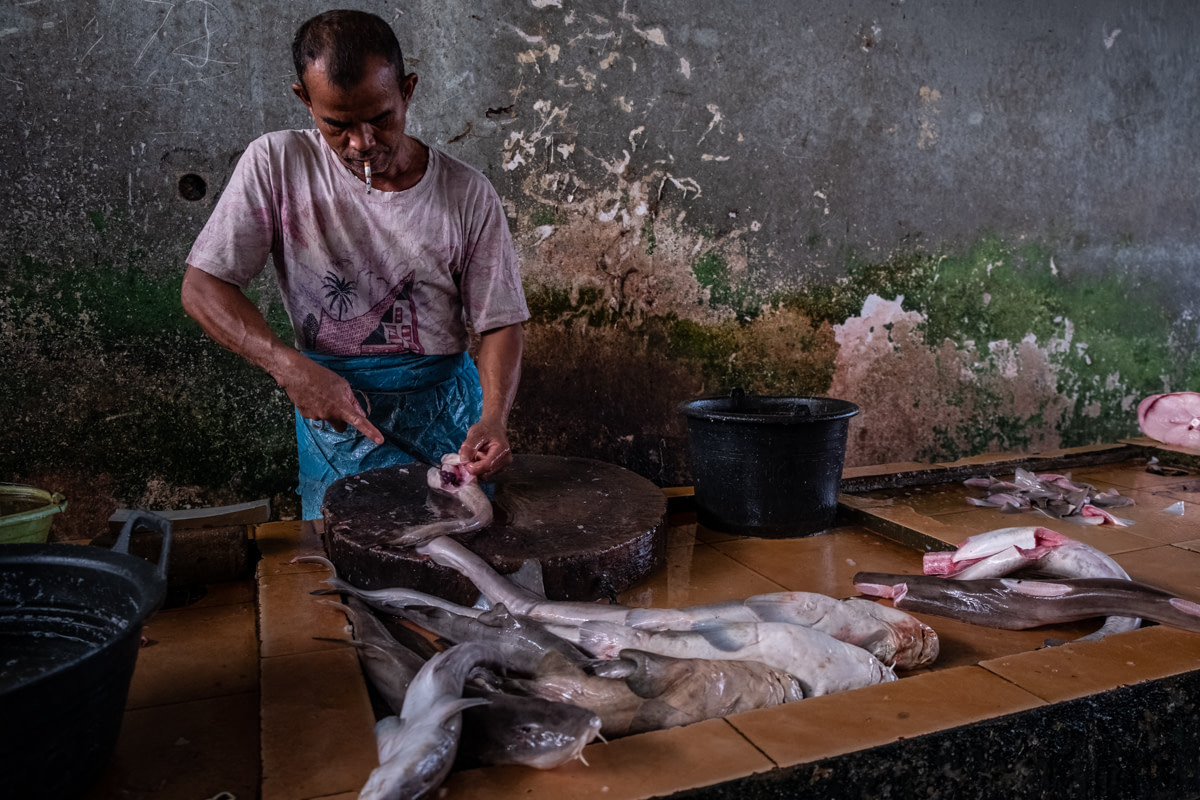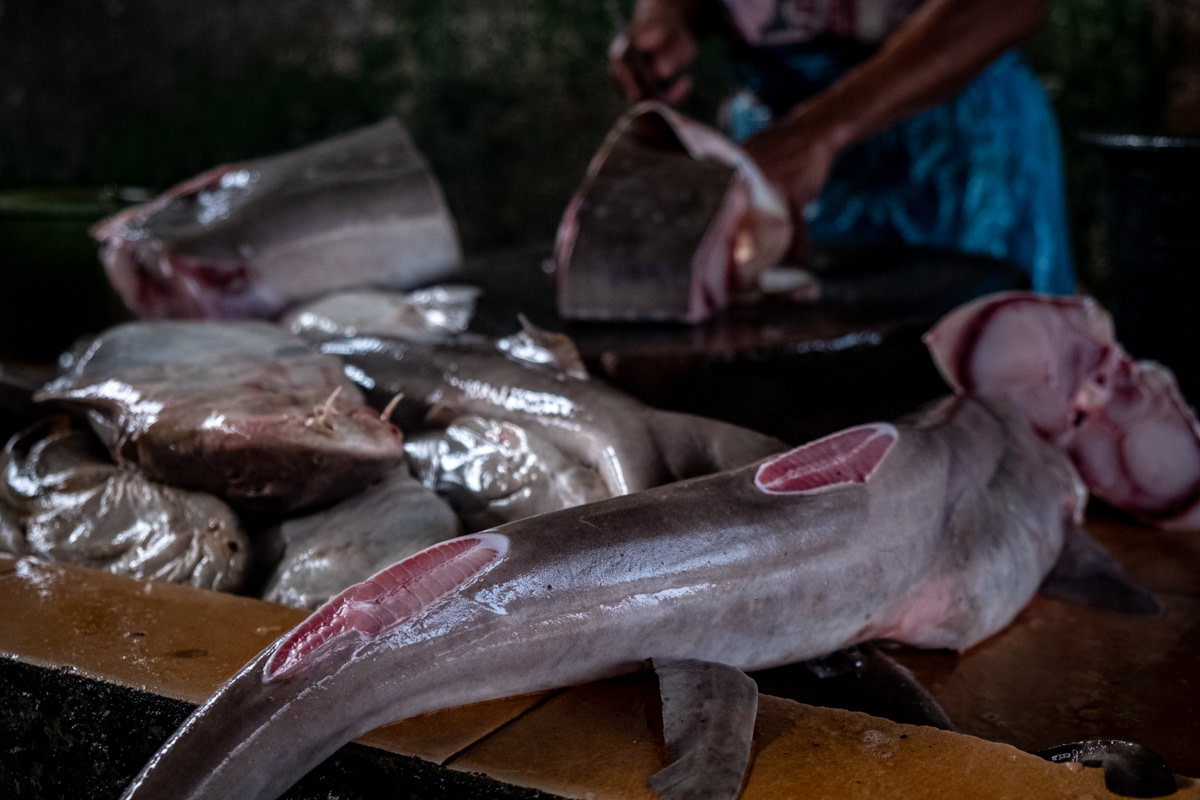Assignment: Inside Indonesia’s Shark Fin and Meat Trade
At a traditional Indonesian market, workers dry pieces of shark fin before selling them. Indonesia, 2022. Resha Juhari / We Animals Media
Photographer: Resha Juhari
Author: We Animals Media
Explore and download these visuals via our stock platform.
Indonesia’s diverse and unique marine habitat is home to 20 percent of the world’s shark and ray species—many of which are endangered. In November, our photojournalist Resha Juhari documented the slaughter and sale of these majestic and often misunderstood creatures at Indonesia’s traditional markets.
“We know that the existence of sharks helps to maintain the marine ecological system. Sharks play an important role in protecting coral reefs and fish populations. What if sharks become extinct? That’s why these visuals are important.” ― Resha Juhari, animal photojournalist
At a traditional Indonesian market, a worker butchers a shark, removing the animal’s fins and separating them from the rest of the shark’s flesh. Sharks’ fins sell for considerably more than the other meat of these animals. Indonesia, 2022. Resha Juhari / We Animals Media
In Pangkalpinang, the capital of Bangka Belitung Island, there is a traditional market where workers cut and dry shark fins in the morning. Starting from small sharks to large ones, all the cuts are made on the spot. At this particular market, Juhari witnessed sharks being cut into pieces, their body parts separated depending on the selling value.
Dried shark fins are sold to collectors in Jakarta and exported abroad to Hong Kong, China and Singapore, selling for high prices. In 2022, the largest fins, up to 40 centimetres in length, could sell for USD $89.00/kg. Comparatively, meat sold from the rest of the shark fetches a price of approximately USD $2.25/kg. As of 2015, Indonesia was the single largest supplier of such products worldwide, catching and producing over 12.3 percent of the world’s supply.
Small shark fins sit separated and waiting to be dried at a traditional Indonesian market. Though small, the fins still sell for considerably more than the meat from the rest of the animal and will be exported to Asian countries such as Hong Kong, Singapore, and China. Indonesia, 2022. Resha Juhari / We Animals Media
A shark fin sits atop a weigh scale at a traditional Indonesian market. The price per kilogram of a shark’s fin is determined by its length. In 2022, the prices start at approximately USD $22.00 per kilogram for 15-20 centimetre-long fins and increase by approximately USD $16.00 per kilogram for every five-centimetre increase. Indonesia, 2022. Resha Juhari / We Animals Media
According to the 2021 International Union for Conservation of Nature (IUCN) Red List, approximately 37% of the world’s shark and ray species are threatened with extinction. Gaps in Indonesia’s fishery regulations have been flagged as facilitating both illegal and unregulated trade of shark products, posing a great risk to the global shark and ray population, which has declined by more than 70% in the past 50 years. These visuals offer a glimpse inside this highly-profitable industry that plays a direct role in this tragic statistic.
Data sources: ScienceDirect / SEAFDEC / IUCN / Mongabay / The Guardian
Explore and download visuals from this assignment via our stock platform, which offers 19,000+ images and video clips for free to anyone helping animals.
Donate today and help us continue to produce compelling global investigations into these cruel industries.
More like this from We Animals Media:
Our Top 10 Images For World Ocean's Day
by We Animals Media | Jun 07, 2022
Fish Farming in Indonesia
by We Animals Media | Apr 13, 2022
Investigation: Mediterranean Fishing - Greece, 2020
by We Animals Media | May 28, 2021












